This summer EDGE is celebrating conservation optimism with Synchronicity Earth at ZSL London Zoo, where graffiti artist Louis Masai will be painting a mural of some very special EDGE species.
To mark both 10 years of the EDGE of Existence programme and celebrate the role of zoos in conservation, graffiti artist Louis Masai will be creating a new EDGE-themed mural at London Zoo. Louis uses his unique patchwork-style artwork to bring endangered species to life and raise awareness of conservation issues. Visitors to the zoo can observe Louis in action between 5th-20th July – and even see some of the featured species live and in person!
Conservation Optimism is a global community dedicated to countering the “doom and gloom” conservation narrative with action-oriented and science-based hope and inspiration. The EDGE species that are to be included in the mural have all been the focus of conservation work by ZSL, and are examples of conservation success stories or positive conservation action underway. Read on to learn a little more about each species story.
Gharial
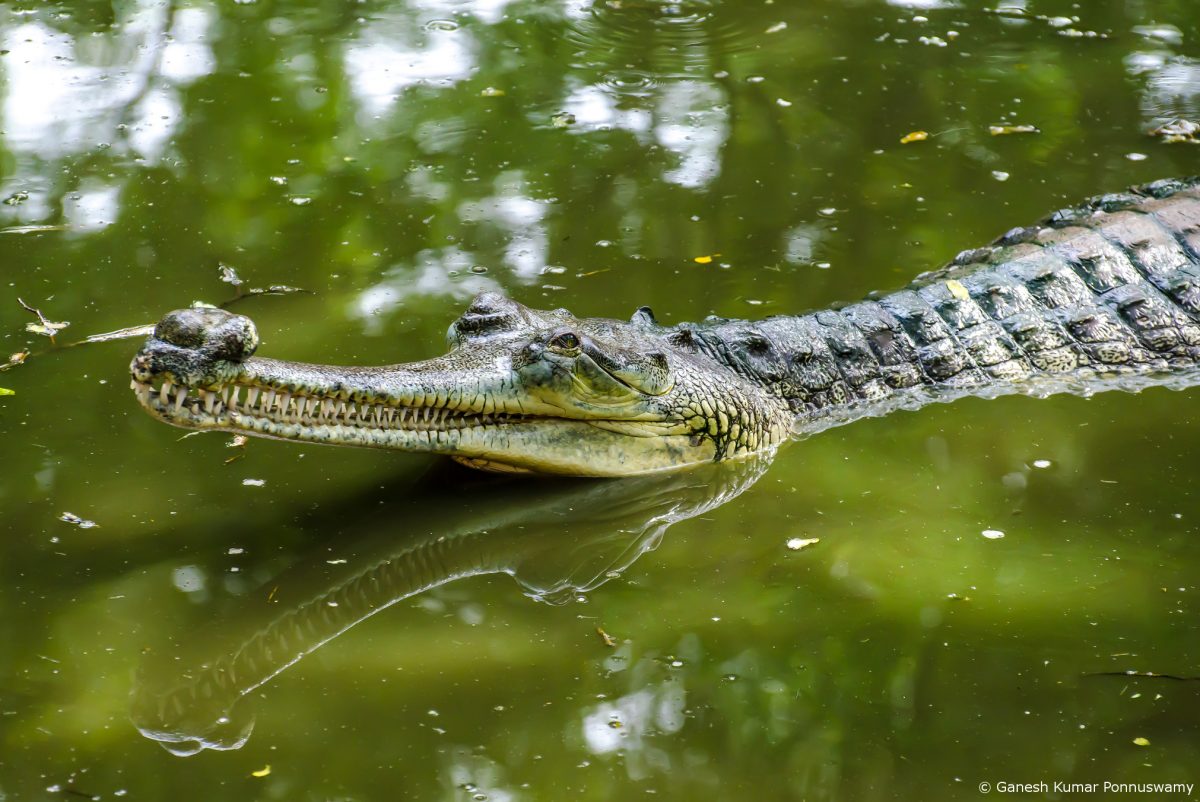
What is it?
The gharial is an unmistakable crocodile on the brink of extinction. It has long, thin jaws which it uses to catch fish and males have a large, bulbous growth, known as a ‘ghara’, on the tip of their snout.
What is its status?
The gharial is listed as Critically Endangered by the International Union for Conservation of Nature (IUCN) Red List as a result of catastrophic population declines, which have seen the population decrease by up to 98% since the 1940s. There are now thought to be fewer than 250 adult individuals remaining in the wild.
The good news
ZSL and its partners have been working in Chitwan National Park, Nepal, where both local communities and a fragile population of gharials are dependent on fish stocks which are in steady decline due to overfishing. To combat this issue and find a solution to benefit both people and gharials, 10 ‘Gharial Guard Groups’ were established. These groups, made up of local community members, protect gharials from poaching and egg collection and prevent unsustainable fishing. You can find out more about this conservation project here.
Lake Oku clawed frog
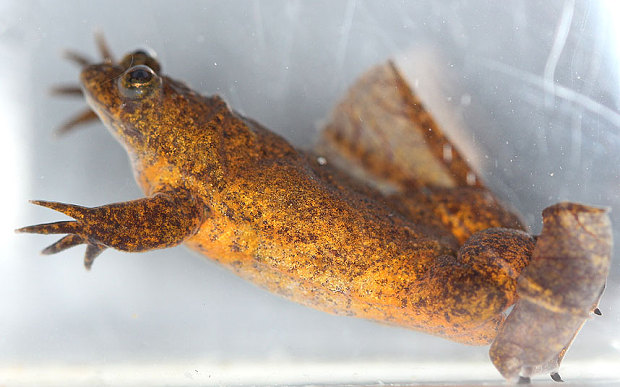
What is it?
The Lake Oku clawed frog is a species of frog endemic to Lake Oku, in northwest Cameroon. They are most unusual in that they have a large number of chromosomes. While most of the world’s animals, including humans, have two sets of chromosomes, the Lake Oku frog has twelve sets!
What is its status?
The IUCN has rated this frog as “Critically Endangered” due to its small area of occurrence at a single location, and the possibility that introduction of non-native fish into the lake could cause the frog to be wiped out.
The good news
ZSL London Zoo was the first place in the world to breed the species in 2014, allowing keepers to gain crucial insights not only into the requirements of the adult frogs but also their tadpoles. Now that the reproductive biology is known this information can be fed into conservation management of the species in Cameroon. The knowledge gained from ZSL’s captive breeding has been widely disseminated and could be used to establish conservation breeding programmes in Cameroon should Lake Oku frog populations crash in the lake.
Philippine eagle
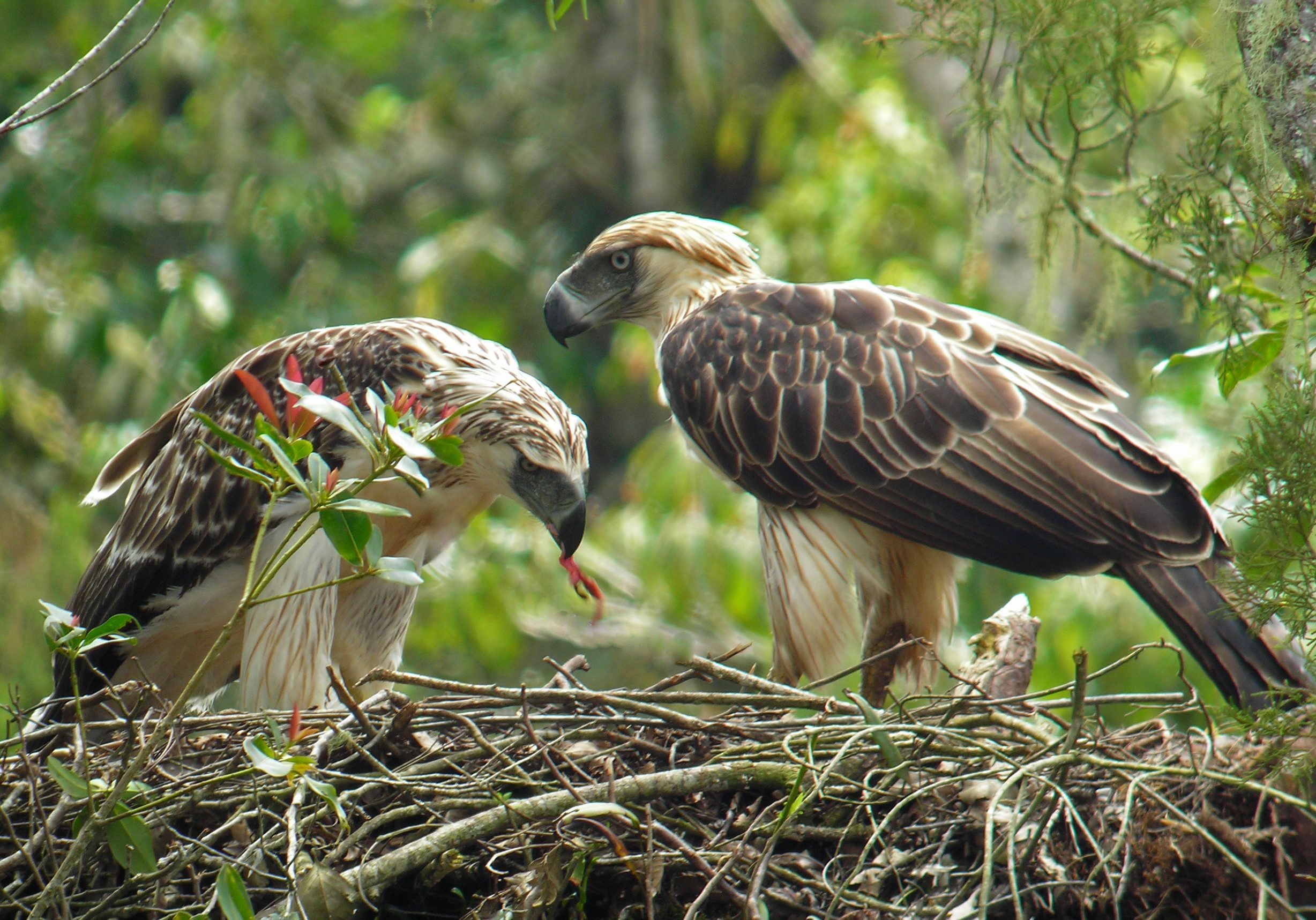
What is it?
The Philippine eagle is one of the world’s largest, most powerful birds of prey. It was formerly known as the Monkey-eating Eagle, as reports from natives told that the raptor preyed exclusively on monkeys. This was later found to be incorrect as more recent studies have revealed the species to prey on a variety of animals ranging from rodents and bats to pigs and monitor lizards.
In 1909 London Zoo became the first known place in the world to hold the species in captivity.
What is its status?
Endemic to the Philippines, the eagle’s small, rapidly declining population has been feared close to extinction for the past 40 years, being currently listed as Critically Endangered by BirdLife International and IUCN. In light of this, it recently acquired the status of the ‘National Bird of the Philippines’, which has helped to increase awareness of the bird and its plight. They are under threat from declining and fragmented habitat, through commercial timber extraction, expanding agriculture, mining operations, uncontrolled hunting, pesticide accumulation, and severe weather events, such as Typhoon Haiyan in 2013.
The good news
EDGE Fellow Kahlil Panopio was instrumental in the recent rediscovery of the species in Nueva Ecija, an area in which eagles had not been documented for more than thirty years. He worked towards establishing the Mingan Mountain Range as a Critical Habitat for the Philippine Eagle and secured local press coverage and developed social media campaigns that promote the conservation of the Philippine Eagle and its habitat.
Pygmy three-toed sloth
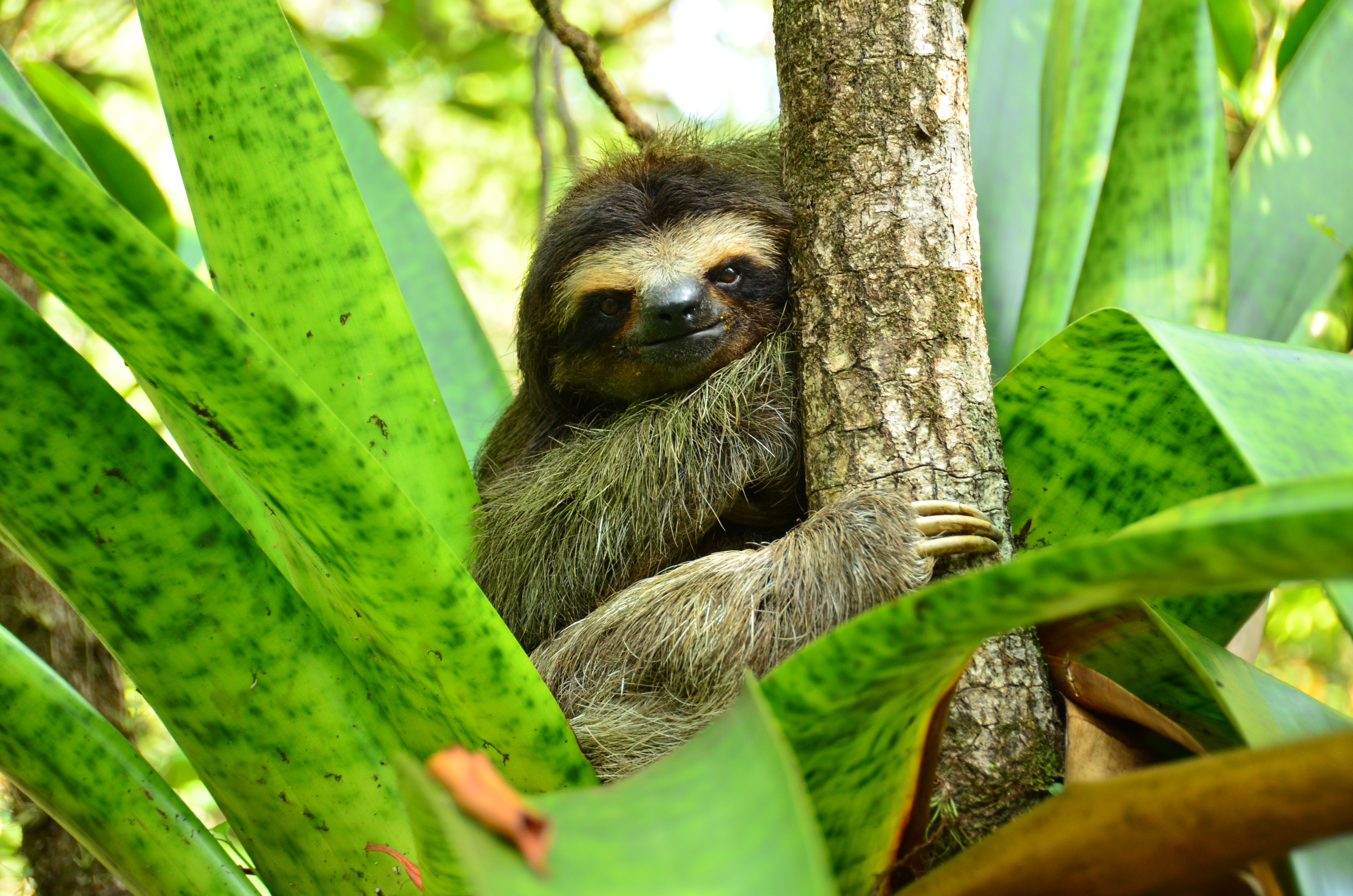
What is it?
The pygmy three-toed sloth is the smallest of the three-toed sloths, and was only recognised as a distinct species in 2001. Through the phenomenon of island dwarfism, they have become the smallest member of their genus. It can only be found on the Isla Escudo de Veraguas, which has been separate from mainland Panama for 9,000 years.
What is its status?
The pygmy sloth is listed as Critically Endangered. The major threat to the sloth is habitat destruction, which is reducing the size of its already small habitat.
The good news
EDGE Fellow Diorene Cabellos works on the pygmy three toed sloth in Panama, and obtained the first official record and photographs of the pygmy three-toed sloth in forest habitats. She established the collaborative ‘Committee for the Protection of the Pygmy Sloth’ and hosted 5 successful stakeholder workshops attended by 250 people. Read more about the EDGE pygmy sloth project here.
Green sawfish
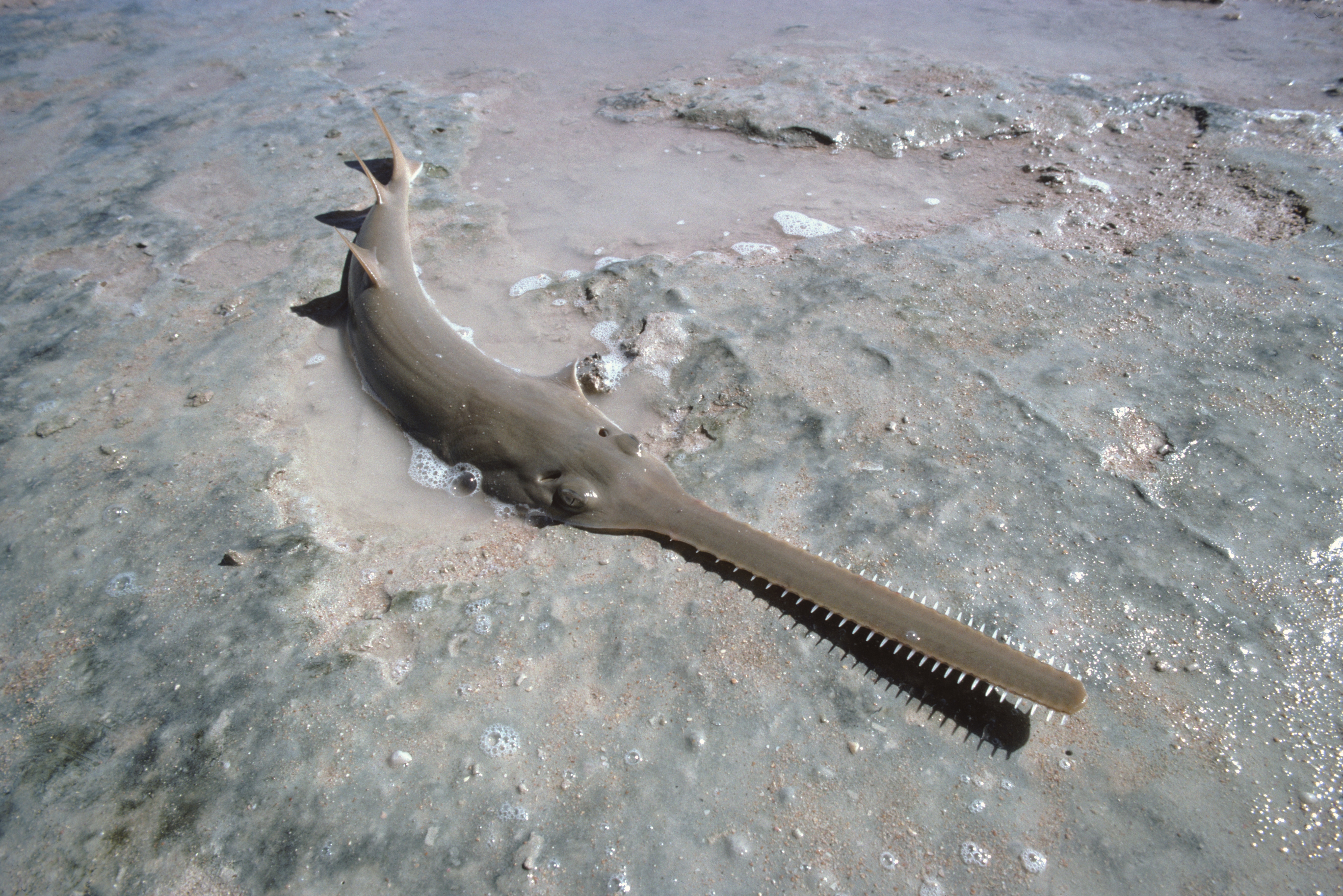
What is it?
The green sawfish is possibly the largest species of sawfish, reaching a maximum length of 7.3m. Sawfish are so-named for their saw-like rostrum. It thrashes its rostrum from side to side to dislodge prey from the seabed and stun groups of fish.
What is its status?
The green sawfish is Critically Endangered, along with all other sawfish species, mainly due to over-exploitation by humans for their fins (for shark fin soup) and their “saw” (as a novelty item). Their saw also makes them particularly vulnerable to becoming entangled in fishing nets.
The good news
ZSL hosted a workshop convened by the IUCN Shark Specialist Group (SSG) aimed at securing a safe future for sawfishes. This culminated in the first-ever conservation strategy for sawfishes. Sawfish have recently started to generate more conservation interest, with 17th October 2017 marking the first annual International Sawfish Day.
Olm salamander
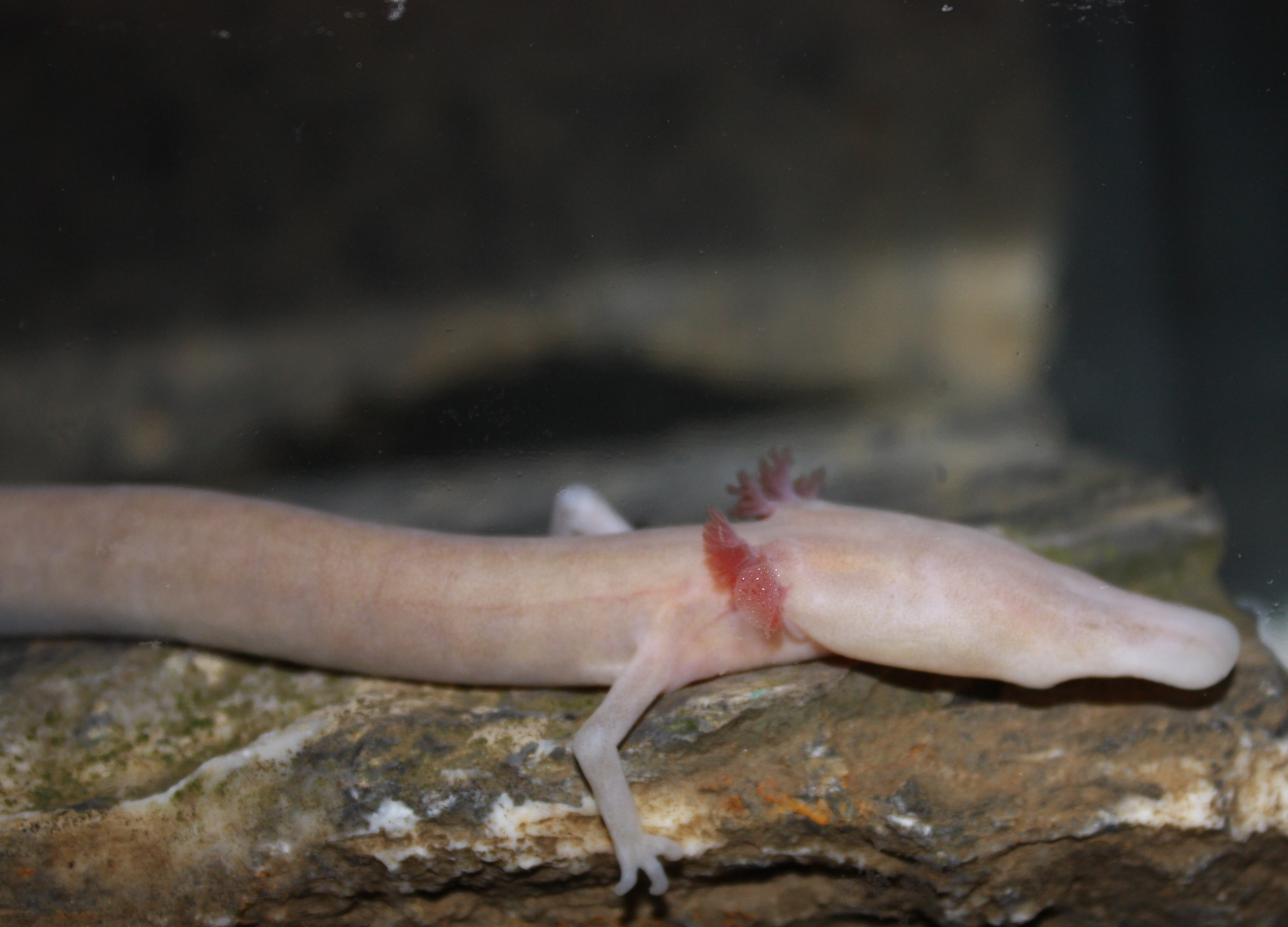
What is it?
The olm is Europe’s only cave-dwelling vertebrate, and has numerous unique adaptations for an underground life. Incredibly, the olm can survive without food for up to a decade!
Olms hunt their prey in the absolute dark and have developed a powerful sensory system of smell, taste, hearing and electrosensitivity. Olms are pale and sightless, although their skin-covered eyes are still sensitive to light, despite spending their entire lives in caves. They are an entirely aquatic species that can live for 58 years or more.
What is its status?
The IUCN lists the species as Vulnerable. The olm requires clean water, and is therefore vulnerable to water pollution. Consequently, the major threats to the olm are pollution and habitat disturbance from land use changes occurring above the cave systems.
The good news
EDGE Fellow Dušan Jelić discovered the largest known single population of olm in Croatia, and identified the species in 70 localities in Croatia, Bosnia and Herzegoveina that were previously unknown to science. Further, he developed an eDNA technique to detect the presence of the species in waterways without having to see them directly. Following his Fellowship, Dušan raised an incredible 450,000 EUR in funding to scale up his work with the olm.